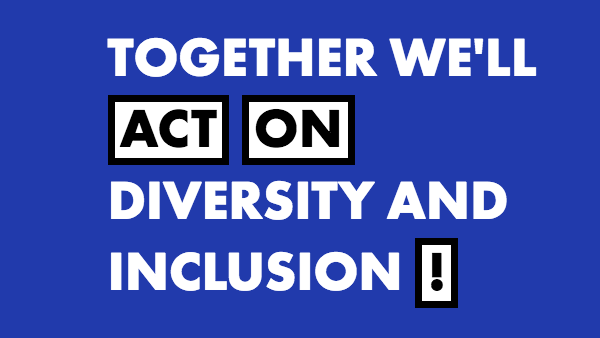As we celebrate Black History Month, it’s essential to recognize the contributions of Black Nurses and the crucial role diversity plays in healthcare. A diverse Nursing workforce isn’t just about representation, it’s about improving patient care, addressing health disparities, and fostering a more inclusive healthcare system.
Why Representation in Nursing Matters
The U.S. population is becoming increasingly diverse, yet the Nursing workforce does not always reflect this diversity. Representation in healthcare matters because:
- It builds trust with patients. Patients often feel more comfortable and understood when they see healthcare providers who share their background or experiences.
- It improves communication and cultural competence. Nurses who understand different cultural norms and traditions can better educate and care for patients.
- It reduces healthcare disparities. Studies show, patients experience better outcomes when treated by healthcare professionals who understand their unique challenges.
The Impact of Diversity on Patient Outcomes
A more diverse Nursing workforce leads to better patient care in several key ways:
- Enhanced Patient Engagement: Patients are more likely to follow medical advice when they feel heard and respected.
- More Equitable Care: Diverse Nurses help identify biases and advocate for marginalized patients.
- Innovative Problem-Solving: Different perspectives lead to more creative and effective healthcare solutions.
Challenges Black Nurses Have Overcome
Despite their invaluable contributions, Black Nurses have historically faced barriers, including:
Exclusion from Nursing Schools: Mary Eliza Mahoney, the first Black licensed Nurse in the U.S., had to fight for education in the 1800s. Many Black Nurses were denied entry to Nursing programs for decades.
Workplace Discrimination: Even after gaining entry into the profession, Black Nurses faced segregation and limited job opportunities.
Health Disparities and Advocacy: Black Nurses have long advocated for underserved communities, often stepping in where the healthcare system has failed.
Remarkable Black Nurses Throughout History
Mary Seacole (1805–1881) – A British-Jamaican Nurse who provided medical care to soldiers during the Crimean War, often compared to Florence Nightingale.Harriet Tubman (1822–1913) – Best known as an abolitionist, she also served as a Nurse during the Civil War, caring for wounded soldiers and using herbal remedies.
Susie King Taylor (1848–1912) – The first Black Army Nurse during the Civil War, though she was never paid for her work. She also taught formerly enslaved people how to read and write.
Adah Belle Samuels Thoms (1870–1943) – A Nurse and activist who helped establish the National Association of Colored Graduate Nurses and fought for Black Nurses to serve in the U.S. Army Nurse Corps.
Estelle Massey Osborne (1901–1981) – The first Black Nurse to earn a master’s degree and an advocate for integrating Black Nurses into the military and professional Nursing organizations.
Hazel W. Johnson-Brown (1927–2011) – The first Black woman to become a brigadier general in the U.S. Army and lead the Army Nurse Corps.
Moving Forward: Creating a More Inclusive Future
While progress has been made, there is still work to be done. To support diversity in Nursing, we must:
Promote Nursing programs that encourage diversity and inclusion.
Support mentorship programs for Black Nurses and students.
Address racial disparities in hiring and leadership roles.
This Black History Month, let’s honor the resilience, dedication, and excellence of Black Nurses, past, present, and future. By continuing to advocate for diversity, we can build a healthcare system that truly serves everyone.


 Why Should Healthcare Be Committed to Diversity in their Workforce?
Why Should Healthcare Be Committed to Diversity in their Workforce? 

 The
The 

 We often hear the term “recruitment brand”, but can you honestly say you have one that reflects Diversity, Equity, and Inclusion? Your “recruitment brand” is NOT what you aspire to be. It is who you are NOW and a big part of that is how others experience or perceive your organization.
We often hear the term “recruitment brand”, but can you honestly say you have one that reflects Diversity, Equity, and Inclusion? Your “recruitment brand” is NOT what you aspire to be. It is who you are NOW and a big part of that is how others experience or perceive your organization. Assess what you’re currently doing. What’s working and what isn’t? Where can you improve? What’s your budget? What are your competitors doing? Once you’ve answered these questions, you must develop a strategy about how and where you’re going to consistently communicate your message through ALL of your internal and external channels including…
Assess what you’re currently doing. What’s working and what isn’t? Where can you improve? What’s your budget? What are your competitors doing? Once you’ve answered these questions, you must develop a strategy about how and where you’re going to consistently communicate your message through ALL of your internal and external channels including…
 According to
According to  Illness is blind to race, gender and ethnic origins. Since you are in the business of caring for others, it's critically important to ensure that clinicians, executives and even members of the governing boards, accurately represent the communities you serve.
Illness is blind to race, gender and ethnic origins. Since you are in the business of caring for others, it's critically important to ensure that clinicians, executives and even members of the governing boards, accurately represent the communities you serve.  The eight-minute film, titled
The eight-minute film, titled